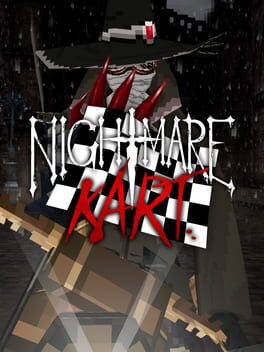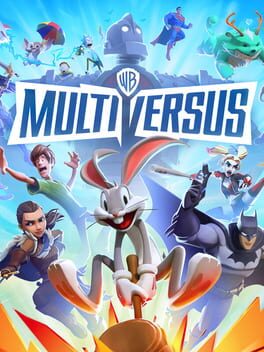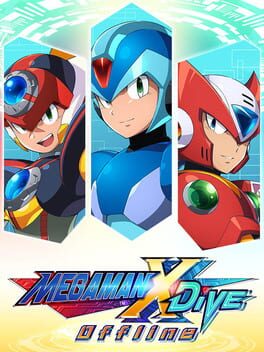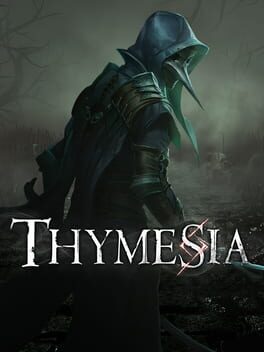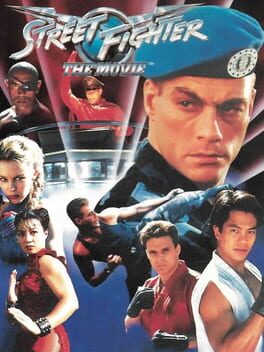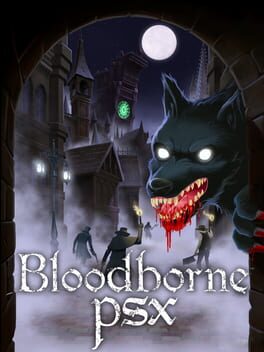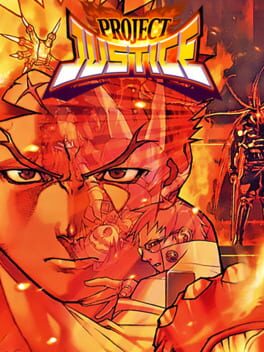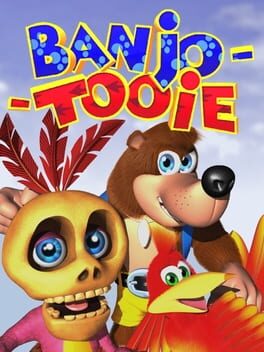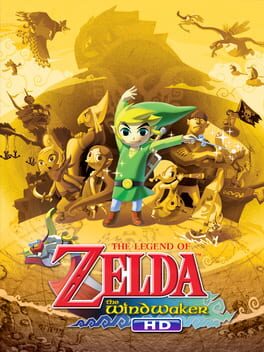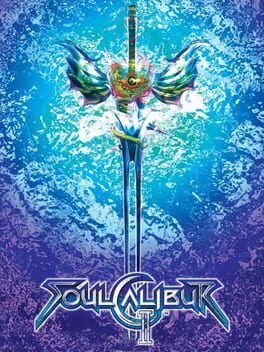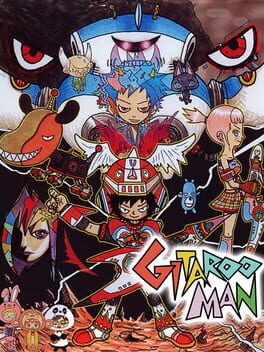CarnageKRool
2024
Not-Bloodborne Kart is a pleasant romp through a familiar cast of royalty-free characters and locations, with some pretty tight controls and surprisingly great music. Having a full campaign and unlockables, it's definitely worth an hour to sit down and play through the whole thing. Though it's held back by the absolute braindead AI and unresponsive acceleration on inclines, if you're a fan of Bloodborne in any capacity, you'll likely have a good time with it.
2022
Being assaulted by an unskippable, hand-holdey, ignorant tutorial full of very obvious information and an onslaught of paragraphs describing 3 different currencies and how a goddamn battle pass works is a really great introduction to a somehow even worse feeling re-release. Nothing says "Smash-killer" like a game so ignorant of it's own target audience that it pretends anyone playing this game hasn't already played Smash about 1000 times before.
This is a decently fun remake of stages and bosses from the Megaman X (and occasionally classic) series interrupted by a really pointless and soulless currency/level up system that takes 10x as long as the actual stages do, even when you're cheating to avoid grinding. The amount of cool references and deep cut characters you can play as are what I can only describe as disappointingly bittersweet. Being able to play as Tron, Bass.exe, and Zero Nightmare is something I want from a real X game, but X9 this is not, and it's existence makes me doubt we'll ever see that game come to light.
2022
Thymesia is a fairly clear meeting of Bloodborne and Sekiro. It's fast and aggressive, and encourages constant engagement rather than hiding behind a shield. Its parry mechanics and summoned weapons are familiar as well, and anyone who's played the samurai souls game will be instantly familiar. But there is a lot of downsides to this otherwise solid journey.
First things first, reading any review on here as well, it's quite obvious the level design is probably the biggest letdown of this game. There are 3 levels you explore total, with varying side missions within. Each of them feel sort of..unrealized, and maze-like. The starting forest is a sprawling tree house structure, with sprawling ramps and bridges, and the occasional big top. A lot of it looks the same, and the added N64/PS1 era fog doesn't help navigation any. The browns and yellows mush into something that's supposed to feel like a creepy funhouse among the trees, but ultimately fails to have any memorable landmarks or staying power in the mind.
The second level is easily the best of the 3 in the game, but that isn't exactly for the best reason. It is by far the most linear, and therefore easiest to navigate. The design itself is the easiest to remember and recognize for the most part, with each section of the level looking fairly unique, enough to recall where you've already been. The worst part of this stage would have to be the endlessly respawning blood enemies. They aren't particularly hard or anything, but how often they show up becomes more annoying that engaging. The only way to be rid of them constantly chasing you down is to find and kill the mini-boss controlling them.
The third level is what I would consider the most confusing to navigate. Being that its your basic castle and village setting, a lot of it inherently looks the same. But the real issue here, is the verticality. There are several places you have to climb up and down towers, with each floor having multiple doors and paths outward. Trying to keep straight which paths you've taken already and which floor leads to progression is actively frustrating.
As far as the actual gameplay goes, there are a few innovations to set it aside from the other 100 soulslike games that have dropped recently. If you've played any of these games, you know the drill. Hyper difficult action RPG with a punishing xp system that demands perfection, or your xp is forfeit. Like Sekiro, there is no stamina meter. Aside from the norms of this genre, the Wound system is the main gameplay gimmick. Basically, when damage is done to an enemy with your basic weapon, they don't lose health, per se. Their health bar will have sections of it turn green, indicating the wounds they have. When wounded, enemies are vulnerable to Claw attacks, which chip away at the green health, to truly do damage. Enemies will have their green health return to normal health over time, so they can no longer be Claw attacked, if left alone for too long. This encourages constant aggression and attacking. When the enemy is out of health, you can perform a finisher on them. The strangest part of this system is that, unlike most souls games, it works against the player. The player takes damage as usual, no green bar, no Claw attacks. In a game like Bloodborne, it's unique gimmick is regaining recently lost health by attacking, encouraging aggression that way. But only the player has that ability in Bloodborne. It feels unusual that the player in an already punishing genre, has to take down what is essentially 2 different health bars to win, when they can be defeated in a few hits. It isn't as hard or relentless as it sounds in the long run, it was just a strange choice to only make it work against you.
Other gimmicks of Thymesia combat include a parry system, which if you've played Sekiro it works mostly the same here. Press guard at the same time as an enemy attacks you, and you do green damage to them. There are some key differences though. For one, there is no blocking in this game. If you miss a parry, you cannot hold down the button and take some chip damage, you simply get hit. Another strange difference, is that small enemies to not enter any kind of a vulnerable state when being parried. They will continue to attack until the animation is done, so parrying only one attack won't cut it. Both of these differences play a key role in why most players tend to ignore parrying altogether. It's much more punishing and difficult than Sekiro, an already very difficult system in that game. Dodging is simply easier and more reliable in the long run, but there is a definite downside to relying on it alone. The games enemies are built around parrying, there is no way around it. Every enemy right down to the bosses, have a very rhythmic way of attacking you, and a very limited moveset. It's never unreasonable to pay attention enough to these enemies and memorize their patterns, especially since there are so few enemy types in the game, you'll be seeing the same exact sword and shield weilding footsoldiers the entire game. On top of that, parrying is downright better to do, since it does damage to the enemies, opening them up for Claw attacks. You can interrupt your own attacks with parries, as well. Staying very close to your enemies and wailing on them, getting rid of their green health, whilst also parrying their attacks is the key to Thymesia.
The last combat mechanic to note is the other large draw to the game, Plague Weapons. Every single enemy in the game, including every boss, drops a Plague Weapon gem. The more gems you have, the more you can unlock/upgrade each Plague Weapon. These weapons come in all shapes and sizes. From buffs, to shields, to a health sapping scythe. They're all flashy, and probably the coolest looking part of Thymesia. Your second meter, below your health, is your energy. These weapons are what use that energy. For the most part, they are used like a skill. When you unlock a Plague Weapon, you can equip it to one of 2 slots, and by pressing a button, you can then use that weapon, spending energy. It will have a short cooldown, and can be used again. There is however, another mechanic with these weapons. If you hold down the Claw attack, and hit an enemy, you can steal their Plague Weapon. This is a one time use weapon that uses no energy, and is scaled to whatever level you have that particular Plague Weapon upgraded to. These weapons are, to simplify, horribly unbalanced. Some of them are borderline useless, and some of them (the bow) are gamebreakingly good. They do massive damage, both normal and Claw, to anything they hit. It won't be too long before you rely on them above most things.
Like most souls games, Thymesia uses xp to level up a few stats in order to grow stronger. Strength (sword damage), Vitality (health), and Plague. Plague is the most interesting of the 3, upgrading Plague Weapon and Claw damage both, and the one I would suggest upgrading for an easy time. Unlike most souls games however, this game has a proper skill tree. Every time you level up, you get a skill point to use on whatever skill you wish, limited to ones further down a specific tree. Much like some of the Plague Weapons, some of these are very unbalanced. A longer dodge is nice, but gaining health every time you hit enemies with Claw attacks, or kill them, will keep you alive seemingly forever. Several levels can be basically sprinted through without using a single health recovery item by simply killing everyone and keeping your health at max. Pair this with the Scythe Plague Weapon that steals massive amounts of health, and outside of bosses, you'll start ignoring your health items altogether.
Speaking of health items, the last major mechanic of Thymesia is the potion crafting and upgrading. Using items received from mini-bosses and bosses, you can upgrade how many uses a potion has, or how much health it restores. It also can be upgraded to increase the amount of ingredients you can use in a potion, which are used in Alchemy, the main draw of potion crafting. Using ingredients found on certain enemies, you will be able to buff your potions with unique effects and healing boosts. These last forever and do not consume your ingredients even when swapped out for another ingredient. When a combination of 3 specific ingredients are used, you can end up with a secret recipe. These recipes add yet another buff to your character every time a potion is used. One in particular is incredibly broken, and can boost you to max level in no time at all. The recipe you get when combining Thyme, Rosemary, and Mint boosts your xp gained by 10%, or so it says. There is at the time of this writing, a very bad bug with this 10% boost. Say you have 9000 souls at one time, and you kill and enemy that gives you 100 souls. The buff is supposed to give you a 10% boost, so 110 souls. Instead, it gives you 100 souls, plus 10% of whatever souls you currently have, which would be 900, therefore a single enemy giving you 1000 souls total. The more souls you currently have, the more broken this buff gets. Using lots of items that give you souls automatically will shoot your soul count up to the millions easily. I ended the game with 204,000,000 souls, and you only need 350,000 to reach max level.
The last thing I want to talk about are the enemies and bosses themselves. Most are your generic villagers and soldiers, easy to dodge, parry, and kill. There are harder variants around, that have a bit more health and a few more attacks. Every level has a few mini bosses, generally an even stronger version of a basic enemy, with even more health and even more moves. There isn't much to say about them beyond what I've already said. Fairly basic, mini-bosses being the most notable of any of them, which are heavily recycled through every level. Bosses are what shine in Thymesia, aside from a few gimmick fights that aren't really fights. (Dragon God from Demon's Souls is a good example of these fights) The actual bosses are otherwise fantastic, and easily my favorite part of the game. They may not have any groundbreaking designs, but they're fast paced, threatening, and challenging, without being too demanding. And I think that leads me to my absolute favorite part of Thymesia. It's the only soulslike that gets the weight of animations anywhere close to FromSoft levels of quality. Something every other soulslike struggles with, has to be animations. They try to mimic that very specific weight and rhythm every FromSoft game has, making their enemies intuitive to fight, being able to parry and dodge their attacks despite seeing them for the first time. Thymesia mimics this feeling better than any non FromSoft souls game. That being said, the balance of the game, or lack thereof, is obvious when completing a playthrough. The first boss of the first level, is probably the hardest time you'll have here. He is relentless, and has a second even harder phase, it feels like a very uphill battle, since you won't have access to any good Plague Weapons, and your potions will be base level. But the longer the game goes on, the easier it gets. Enemies become jokes, and bosses become minor step stones. And I think that sums up my feelings of Thymesia in general.
Thymesia is a fun romp through some less than amazing levels, not very memorable enemies, and great bosses. Ultimately, the lack of any balance the has game dominates how the second half plays out. Some potions and Plague Weapons absolutely trivialize the game, making it so you don't really rely on any high skill or carefully thought strategies. It feels much more soulslike at first, but the longer it goes on, the less threatened you'll be by everything that dares stand against the Plague Bow. For a $25 dollar price tag, I would probably suggest it to any Sekiro fans, given how similar the gameplay is, but if you're looking for a serious challenge, it just isn't here. With some unique gimmicks and fast paced combat, there are some cool moments with it, but I just don't see myself revisiting this game every year like I do with something as magical and memorable as Bloodborne. If you've got $25 to throw around and are just looking for a new game to blow 6 hours on, you could do a lot worse.
First things first, reading any review on here as well, it's quite obvious the level design is probably the biggest letdown of this game. There are 3 levels you explore total, with varying side missions within. Each of them feel sort of..unrealized, and maze-like. The starting forest is a sprawling tree house structure, with sprawling ramps and bridges, and the occasional big top. A lot of it looks the same, and the added N64/PS1 era fog doesn't help navigation any. The browns and yellows mush into something that's supposed to feel like a creepy funhouse among the trees, but ultimately fails to have any memorable landmarks or staying power in the mind.
The second level is easily the best of the 3 in the game, but that isn't exactly for the best reason. It is by far the most linear, and therefore easiest to navigate. The design itself is the easiest to remember and recognize for the most part, with each section of the level looking fairly unique, enough to recall where you've already been. The worst part of this stage would have to be the endlessly respawning blood enemies. They aren't particularly hard or anything, but how often they show up becomes more annoying that engaging. The only way to be rid of them constantly chasing you down is to find and kill the mini-boss controlling them.
The third level is what I would consider the most confusing to navigate. Being that its your basic castle and village setting, a lot of it inherently looks the same. But the real issue here, is the verticality. There are several places you have to climb up and down towers, with each floor having multiple doors and paths outward. Trying to keep straight which paths you've taken already and which floor leads to progression is actively frustrating.
As far as the actual gameplay goes, there are a few innovations to set it aside from the other 100 soulslike games that have dropped recently. If you've played any of these games, you know the drill. Hyper difficult action RPG with a punishing xp system that demands perfection, or your xp is forfeit. Like Sekiro, there is no stamina meter. Aside from the norms of this genre, the Wound system is the main gameplay gimmick. Basically, when damage is done to an enemy with your basic weapon, they don't lose health, per se. Their health bar will have sections of it turn green, indicating the wounds they have. When wounded, enemies are vulnerable to Claw attacks, which chip away at the green health, to truly do damage. Enemies will have their green health return to normal health over time, so they can no longer be Claw attacked, if left alone for too long. This encourages constant aggression and attacking. When the enemy is out of health, you can perform a finisher on them. The strangest part of this system is that, unlike most souls games, it works against the player. The player takes damage as usual, no green bar, no Claw attacks. In a game like Bloodborne, it's unique gimmick is regaining recently lost health by attacking, encouraging aggression that way. But only the player has that ability in Bloodborne. It feels unusual that the player in an already punishing genre, has to take down what is essentially 2 different health bars to win, when they can be defeated in a few hits. It isn't as hard or relentless as it sounds in the long run, it was just a strange choice to only make it work against you.
Other gimmicks of Thymesia combat include a parry system, which if you've played Sekiro it works mostly the same here. Press guard at the same time as an enemy attacks you, and you do green damage to them. There are some key differences though. For one, there is no blocking in this game. If you miss a parry, you cannot hold down the button and take some chip damage, you simply get hit. Another strange difference, is that small enemies to not enter any kind of a vulnerable state when being parried. They will continue to attack until the animation is done, so parrying only one attack won't cut it. Both of these differences play a key role in why most players tend to ignore parrying altogether. It's much more punishing and difficult than Sekiro, an already very difficult system in that game. Dodging is simply easier and more reliable in the long run, but there is a definite downside to relying on it alone. The games enemies are built around parrying, there is no way around it. Every enemy right down to the bosses, have a very rhythmic way of attacking you, and a very limited moveset. It's never unreasonable to pay attention enough to these enemies and memorize their patterns, especially since there are so few enemy types in the game, you'll be seeing the same exact sword and shield weilding footsoldiers the entire game. On top of that, parrying is downright better to do, since it does damage to the enemies, opening them up for Claw attacks. You can interrupt your own attacks with parries, as well. Staying very close to your enemies and wailing on them, getting rid of their green health, whilst also parrying their attacks is the key to Thymesia.
The last combat mechanic to note is the other large draw to the game, Plague Weapons. Every single enemy in the game, including every boss, drops a Plague Weapon gem. The more gems you have, the more you can unlock/upgrade each Plague Weapon. These weapons come in all shapes and sizes. From buffs, to shields, to a health sapping scythe. They're all flashy, and probably the coolest looking part of Thymesia. Your second meter, below your health, is your energy. These weapons are what use that energy. For the most part, they are used like a skill. When you unlock a Plague Weapon, you can equip it to one of 2 slots, and by pressing a button, you can then use that weapon, spending energy. It will have a short cooldown, and can be used again. There is however, another mechanic with these weapons. If you hold down the Claw attack, and hit an enemy, you can steal their Plague Weapon. This is a one time use weapon that uses no energy, and is scaled to whatever level you have that particular Plague Weapon upgraded to. These weapons are, to simplify, horribly unbalanced. Some of them are borderline useless, and some of them (the bow) are gamebreakingly good. They do massive damage, both normal and Claw, to anything they hit. It won't be too long before you rely on them above most things.
Like most souls games, Thymesia uses xp to level up a few stats in order to grow stronger. Strength (sword damage), Vitality (health), and Plague. Plague is the most interesting of the 3, upgrading Plague Weapon and Claw damage both, and the one I would suggest upgrading for an easy time. Unlike most souls games however, this game has a proper skill tree. Every time you level up, you get a skill point to use on whatever skill you wish, limited to ones further down a specific tree. Much like some of the Plague Weapons, some of these are very unbalanced. A longer dodge is nice, but gaining health every time you hit enemies with Claw attacks, or kill them, will keep you alive seemingly forever. Several levels can be basically sprinted through without using a single health recovery item by simply killing everyone and keeping your health at max. Pair this with the Scythe Plague Weapon that steals massive amounts of health, and outside of bosses, you'll start ignoring your health items altogether.
Speaking of health items, the last major mechanic of Thymesia is the potion crafting and upgrading. Using items received from mini-bosses and bosses, you can upgrade how many uses a potion has, or how much health it restores. It also can be upgraded to increase the amount of ingredients you can use in a potion, which are used in Alchemy, the main draw of potion crafting. Using ingredients found on certain enemies, you will be able to buff your potions with unique effects and healing boosts. These last forever and do not consume your ingredients even when swapped out for another ingredient. When a combination of 3 specific ingredients are used, you can end up with a secret recipe. These recipes add yet another buff to your character every time a potion is used. One in particular is incredibly broken, and can boost you to max level in no time at all. The recipe you get when combining Thyme, Rosemary, and Mint boosts your xp gained by 10%, or so it says. There is at the time of this writing, a very bad bug with this 10% boost. Say you have 9000 souls at one time, and you kill and enemy that gives you 100 souls. The buff is supposed to give you a 10% boost, so 110 souls. Instead, it gives you 100 souls, plus 10% of whatever souls you currently have, which would be 900, therefore a single enemy giving you 1000 souls total. The more souls you currently have, the more broken this buff gets. Using lots of items that give you souls automatically will shoot your soul count up to the millions easily. I ended the game with 204,000,000 souls, and you only need 350,000 to reach max level.
The last thing I want to talk about are the enemies and bosses themselves. Most are your generic villagers and soldiers, easy to dodge, parry, and kill. There are harder variants around, that have a bit more health and a few more attacks. Every level has a few mini bosses, generally an even stronger version of a basic enemy, with even more health and even more moves. There isn't much to say about them beyond what I've already said. Fairly basic, mini-bosses being the most notable of any of them, which are heavily recycled through every level. Bosses are what shine in Thymesia, aside from a few gimmick fights that aren't really fights. (Dragon God from Demon's Souls is a good example of these fights) The actual bosses are otherwise fantastic, and easily my favorite part of the game. They may not have any groundbreaking designs, but they're fast paced, threatening, and challenging, without being too demanding. And I think that leads me to my absolute favorite part of Thymesia. It's the only soulslike that gets the weight of animations anywhere close to FromSoft levels of quality. Something every other soulslike struggles with, has to be animations. They try to mimic that very specific weight and rhythm every FromSoft game has, making their enemies intuitive to fight, being able to parry and dodge their attacks despite seeing them for the first time. Thymesia mimics this feeling better than any non FromSoft souls game. That being said, the balance of the game, or lack thereof, is obvious when completing a playthrough. The first boss of the first level, is probably the hardest time you'll have here. He is relentless, and has a second even harder phase, it feels like a very uphill battle, since you won't have access to any good Plague Weapons, and your potions will be base level. But the longer the game goes on, the easier it gets. Enemies become jokes, and bosses become minor step stones. And I think that sums up my feelings of Thymesia in general.
Thymesia is a fun romp through some less than amazing levels, not very memorable enemies, and great bosses. Ultimately, the lack of any balance the has game dominates how the second half plays out. Some potions and Plague Weapons absolutely trivialize the game, making it so you don't really rely on any high skill or carefully thought strategies. It feels much more soulslike at first, but the longer it goes on, the less threatened you'll be by everything that dares stand against the Plague Bow. For a $25 dollar price tag, I would probably suggest it to any Sekiro fans, given how similar the gameplay is, but if you're looking for a serious challenge, it just isn't here. With some unique gimmicks and fast paced combat, there are some cool moments with it, but I just don't see myself revisiting this game every year like I do with something as magical and memorable as Bloodborne. If you've got $25 to throw around and are just looking for a new game to blow 6 hours on, you could do a lot worse.
2022
This review contains spoilers
The Bloodborne community really is more dedicated and creative than many communities I've personally seen. From chalice dungeons that feature secret bosses, to the artwork and animations done in its honor, the PS4 game really is only half of the whole picture. Its shocking how much content for this one game has come around, considering it's not even 7 years old from the day I write this. While fans wait for a remake, PS5 version, a re-release of any kind really, we have the next best thing, a Bloodborne demake.
As the title suggests, Bloodborne PSX is essentially a PS1 version of the game, the opening of it at least. Right down to every jittering texture and limited quality sound, this game oozes late 90s gaming. The menus are clunky and disjointed, (optional) loading screens are added, and there are myriad different filters to slap over the game to make it appear how you'd imagine it would be 25 years ago.
As far as the actually gameplay goes, it is still very much Bloodborne, and if you know the original well, this will be a breeze to pick up. Combat is fast and aggressive. Attacking and dodging is still just as responsive as it is on PS4, and locking on is exactly as unreliable during bosses. The thing you'll have to get used to the most would probably be the movement and camera. On the PS1, there was no analog sticks, at least not at first. Movement is done with the d-pad, and the camera is moved around by L2 and R2. It isn't a huge deal to learn, but it was worth mentioning. The next most important thing, is that you cannot transform your weapon in game. You have to fully pause, scroll down to your equipped weapon, and press L1 to transform it. As such, transform attacks are not a thing. I will say though, that there is an element of imbalance with certain things. For example, the gun, while still useful on the Trolls and Werewolves, feels a bit nerfed. The enemies in PSX seem to stagger from taking damage less overall, leading to the parry system just being ignored by villagers. On the other hand, power attacks (at least for the Saw Cleaver) seem very good. They always knock down and come out much quicker than usual. The AI is a little funky at times, either dodging around more than they're supposed to, or just not activating at all when you approach from an unusual angle. It still feels great to play in general, and the added jank is definitely part of being a PS1 game.
The map itself is the same, for the most part, more on that later. If you've played the original, you'll recognize just about every area in the game, even if it might take a second. The added black fog that old consoles had to make sure the system could render everything plays a huge part in navigating. Some areas look strange and unrecognizable, due to it being a hallway with nothing but darkness on the other end, only to walk forward into a familiar room with a familiar staircase. It filled me with anxiety when I didn't know where I was. Bloodborne is stressful, but playing it 12 times and suddenly feeling lost is surprisingly unsettling. There's something to be said about the art style and design of Bloodborne in general. Even de-resed and running at 20fps, its still beautiful. The Hunter's Dream in particular is wonderful to look at, the way the lighting shines upward on that hidden away workshop.
On to SPOILER TERRITORY. Starting with the least spoilery, enemies aren't all the same. There are some enemies that didn't get 3D models, so even though you head to a place they'd normally be in the original, they'll likely be replaced by some other enemy you've seen already. An example would be the Beastmen. There isn't a single Beastman in the entire game, so wherever you'd normally see one, it's probably a Werewolf instead.
The map itself isn't even exactly the same. Nine times out of ten, most of the map remains faithful to the PS4 version, but there are actually added hallways, shortcuts, and even entire areas that weren't there before. It starts small, a little item in the starting area that wasn't there before. It slowly grows into a hallway and shortcut that you don't recognize, maybe a lantern. But then you stumble across an entire zone that wasn't there before. It feels like playing something new again, and I wanted to explore more. The new areas are...both the best and the worst thing about this demake, the reason for giving 4.5 starts instead of 5. Its incredibly obvious what areas are new even if you've never played the game before, because the design is just, sort of bad. Almost every new place in the game comes down to winding hallways, a maze of corridors with very little to landmark where to go and where you've been, it gets confusing quickly. It doesn't help that the doors in these areas sometimes close themselves after being opened, which may be a bug for a launch version, but it makes navigating the endless hallways that much worse. It was fun to explore and see what secrets the game held, but it was also the part that took the longest and stressed me out the most.
As for the last major spoiler, this is a big one. The game was advertised to end after the Gascoigne fight. Well...it doesn't. If you try to open the path to Cathedral Ward, you get a small cutscene, and a message that the night grows even darker. Try to use the lantern to teleport anywhere else, and aside from the Hunter's Dream, you can't. You essentially have to make your way backwards through the opening of the game, with new enemies, some harder versions of ones you've seen, and some that weren't there before at all. At the end of it all, a secret boss fight that I won't delve into here, but it is AWESOME.
From start to finish, Bloodborne PSX is a blast. For fans of the original, or just fans of the PS1, I highly recommend. The clunkiness is apparent, but never gets to be too much, it still feels great to play. Surprises kept it very entertaining, especially when I went into it expecting nothing but what I've already seen, but bad level design in the new areas ultimately kept it from being a perfect demake.
As the title suggests, Bloodborne PSX is essentially a PS1 version of the game, the opening of it at least. Right down to every jittering texture and limited quality sound, this game oozes late 90s gaming. The menus are clunky and disjointed, (optional) loading screens are added, and there are myriad different filters to slap over the game to make it appear how you'd imagine it would be 25 years ago.
As far as the actually gameplay goes, it is still very much Bloodborne, and if you know the original well, this will be a breeze to pick up. Combat is fast and aggressive. Attacking and dodging is still just as responsive as it is on PS4, and locking on is exactly as unreliable during bosses. The thing you'll have to get used to the most would probably be the movement and camera. On the PS1, there was no analog sticks, at least not at first. Movement is done with the d-pad, and the camera is moved around by L2 and R2. It isn't a huge deal to learn, but it was worth mentioning. The next most important thing, is that you cannot transform your weapon in game. You have to fully pause, scroll down to your equipped weapon, and press L1 to transform it. As such, transform attacks are not a thing. I will say though, that there is an element of imbalance with certain things. For example, the gun, while still useful on the Trolls and Werewolves, feels a bit nerfed. The enemies in PSX seem to stagger from taking damage less overall, leading to the parry system just being ignored by villagers. On the other hand, power attacks (at least for the Saw Cleaver) seem very good. They always knock down and come out much quicker than usual. The AI is a little funky at times, either dodging around more than they're supposed to, or just not activating at all when you approach from an unusual angle. It still feels great to play in general, and the added jank is definitely part of being a PS1 game.
The map itself is the same, for the most part, more on that later. If you've played the original, you'll recognize just about every area in the game, even if it might take a second. The added black fog that old consoles had to make sure the system could render everything plays a huge part in navigating. Some areas look strange and unrecognizable, due to it being a hallway with nothing but darkness on the other end, only to walk forward into a familiar room with a familiar staircase. It filled me with anxiety when I didn't know where I was. Bloodborne is stressful, but playing it 12 times and suddenly feeling lost is surprisingly unsettling. There's something to be said about the art style and design of Bloodborne in general. Even de-resed and running at 20fps, its still beautiful. The Hunter's Dream in particular is wonderful to look at, the way the lighting shines upward on that hidden away workshop.
On to SPOILER TERRITORY. Starting with the least spoilery, enemies aren't all the same. There are some enemies that didn't get 3D models, so even though you head to a place they'd normally be in the original, they'll likely be replaced by some other enemy you've seen already. An example would be the Beastmen. There isn't a single Beastman in the entire game, so wherever you'd normally see one, it's probably a Werewolf instead.
The map itself isn't even exactly the same. Nine times out of ten, most of the map remains faithful to the PS4 version, but there are actually added hallways, shortcuts, and even entire areas that weren't there before. It starts small, a little item in the starting area that wasn't there before. It slowly grows into a hallway and shortcut that you don't recognize, maybe a lantern. But then you stumble across an entire zone that wasn't there before. It feels like playing something new again, and I wanted to explore more. The new areas are...both the best and the worst thing about this demake, the reason for giving 4.5 starts instead of 5. Its incredibly obvious what areas are new even if you've never played the game before, because the design is just, sort of bad. Almost every new place in the game comes down to winding hallways, a maze of corridors with very little to landmark where to go and where you've been, it gets confusing quickly. It doesn't help that the doors in these areas sometimes close themselves after being opened, which may be a bug for a launch version, but it makes navigating the endless hallways that much worse. It was fun to explore and see what secrets the game held, but it was also the part that took the longest and stressed me out the most.
As for the last major spoiler, this is a big one. The game was advertised to end after the Gascoigne fight. Well...it doesn't. If you try to open the path to Cathedral Ward, you get a small cutscene, and a message that the night grows even darker. Try to use the lantern to teleport anywhere else, and aside from the Hunter's Dream, you can't. You essentially have to make your way backwards through the opening of the game, with new enemies, some harder versions of ones you've seen, and some that weren't there before at all. At the end of it all, a secret boss fight that I won't delve into here, but it is AWESOME.
From start to finish, Bloodborne PSX is a blast. For fans of the original, or just fans of the PS1, I highly recommend. The clunkiness is apparent, but never gets to be too much, it still feels great to play. Surprises kept it very entertaining, especially when I went into it expecting nothing but what I've already seen, but bad level design in the new areas ultimately kept it from being a perfect demake.
1996
2000
Oh man, Project Justice. One of the greatest fighting games I personally have ever played. It has charm around every corner, in all the character designs, the movesets, the stages..this game has it all. Project Justice is the sequel to the lesser known Rival Schools, a Capcom game released in arcades in 1997, and later PS1 in 1998. It features vastly improved visuals, more characters, special attacks, and a full blown story, one for each "school". Mechanically, this game feels amazing to play. Snappy dodges, alpha counters, and team attacks are everywhere, never feeling like you're helpless in any situation. Interrupting your character being team attacked by sending out your own teammate to do some damage never gets old. It's fast and crazy and chaotic, just like how I like my games. There's no get-out-of-jail-free cards here, no combo breakers, but the ability to prevent yourself from being damaged is everywhere, and always comes with its own risks. Stylish as hell combos and high flying air combos add to the chaotic nature of the title, always able to make even beginners feel great. Variety is key in the roster, every archetype seems to be covered. Moe girls, hot-headed protagonists, and edgelords are all in there. Topped off with a great soundtrack to beat up the rival schools to, makes for a great experience with friends, or even jamming on story mode yourself.
2000
As is often the case with these favorites of mine, Banjo was always a childhood game. I remember having a sick day at home, while my brothers went to school, and my parents went to work, I would often enjoy the time to myself and jam on Banjo-Tooie for hours on end. Looking at the game objectively now, it's still an absolute joy and a treat to play. Banjo-Tooie is the sequel to the critically-acclaimed, fan favorite N64 title, Banjo-Kazooie. It often feels like Tooie is the less talked about game, with Kazooie being praised for decades on end at this point. Compared to Kazooie, it features improved camera and controls, and a significantly darker story. You wouldn't expect it from a game about a bear and a witch, but from the very first cutscene, even before you reach the title screen, you're met with some very heavy themes, especially as a child. This dark theme often pops up throughout the game, splitting up the bright world and upbeat tunes. Certain cutscenes and characters actually freaked me out as a kid, and some of them still do, really. Aside from the theming, the game itself is as wonderfully colorful and impressive as the original, with memorable locals and NPC's around every corner. This game is packed to the absolute brim with secrets and content, even more so than the original Banjo. Puzzles to solve, large maps to explore, all while listening to Grant Kirkhope do his absolute best work on the soundtrack. Banjo-Tooie may not be the game of the two talked about the most, but I personally hold it far above the original, and I patiently await the day that maybe, just maybe, Threeie is out there somewhere.
Wind Waker is one of those games that was played at a friends house, or borrowed from them, but never owned for me. The origins of Wind Waker are fairly well known at this point; a Zelda game that was hated religiously due to a Twilight Princess-esque tech demo for GameCube. Fans wanted a dark, grim Zelda. Well, looking at WW, you could understand the letdown of chibi Toon Link. Years later, it's one of the most beloved Zelda games of all time, and my personal favorite. The sheer scope, sense of adventure, and open-endedness of the title still is a little daunting to many, as the biggest complaint of the game to this day continues to be the long sailing sections. While I completely see the basis for that, it never bothered me. I was always too busy looking at the bright blue oceans, listening to the Great Sea theme, and wondering what I'll discover on the islands in the distance. The cast of quirky characters and wonderful swirly designs is always a wonderful welcome back whenever returning to this game. The art style in general, has to be one of my favorites of all time. It commits so deeply to itself, every last texture and detail lends itself to the bright, spiraling, colorful world. Like most Zelda titles, the soundtrack is something to behold. The arrangements of fan favorites like, Zelda's Theme, and Great Fairy Fountain are here, and sounding better than ever. The new music even blows it out of the water. The snappy, catchy tune of Dragon Roost Island will forever be my absolute favorite song of the series. Overall, it has a lot for Zelda fans, there are some hurdles to overcome if you don't have the patience, but Wind Waker is always a treat to come back to and enjoy any chance I get.
2002
Transcending history and the world, a tale of souls and swords eternally retold. I don't think there is a fighting game out there with more emotional and personal significance than SoulCalibur 2. I can name every character, hum every tune, and warp back to a simpler time, before the struggles of adulthood every time I hear this game boot up. Even the intro alone is enough to get emotions going. SoulCalibur was always a benchmark for gaming visuals and overall great design, and 2 is no letdown. It expands upon the first game in just about every way, while keeping it faithful to why the original was one of the most important games of its time. Guest characters and multiple weapons spice up the gameplay here, as well as a full dungeon crawler mode to add variety to regular arcade ladders. I have no real complaints here, it's just a god damn solid fighting game that means a lot to me personally, and will always be attracting crowds until the end of time.
2015
Out of all my favorite games, this one has to be the most impressive. Unlike the rest of the games on my favorites, it's very recent. I never expected anything new to impress me or blow me away, but Bloodborne is truly the gift that keeps on giving. Like all FromSoft games, it is not easy to jump into for just anybody, but upon learning more and understanding enemy patterns, environments, strategies, and especially lore, the appreciation for everything in this title grows exponentially. So much depth and deep consideration is tucked into every nook and cranny of Bloodborne, sometimes it's actually sort of amazing. The breathtaking world, grotesque enemies, and mysterious but brilliant story has wrapped me back in for about 11 playthroughs, and I don't ever see myself being tired of this modern masterpiece.
2001
A childhood game, as well as a hurdle I had the personal need to overcome for years. I could never beat it, understandably so. Finally I conquered the number 1 game on my list of personal vendettas, and was surprised by how much it holds up. Great art style, fun characters, and an absolute 10/10 soundtrack. Only complaints I have would be the length, as well as the lack of a large deep story. Its a very short game, you could probably beat it in about an hour if you mastered it. This doesn't allow a very intricate story to be told, but it's stuck with me my whole life regardless. It is overall inspiring and uplifting, but it requires a damn steady hand and cool head to get through, the difficulty curves here are steep as hell.
